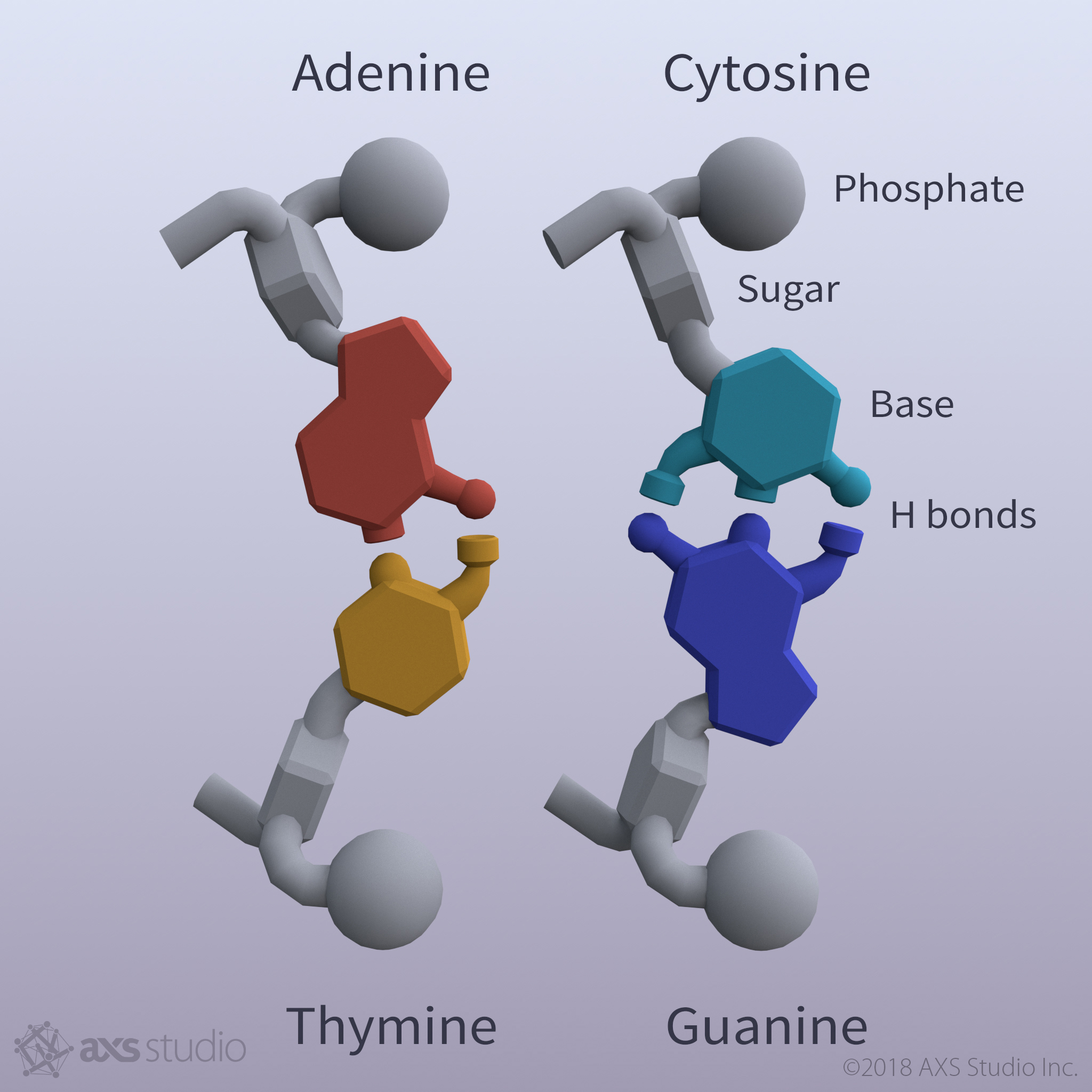Science and learning requirements: The game features DNA mismatch repair, with players (as nanobots) identifying incorrectly paired bases, excising them, collecting correct bases, and ligating them in place.
We want players to gain an intuitive understanding of how DNA is constructed: i.e., two strands, each with a backbone and a sequence of bases; each base paired to a base on the opposite strand (A with T, and C with G). The bases should be easily recognizable so that mismatches can be identified. The DNA should be accurate with respect to the 3D spatial arrangement of components ( and handedness).
Because the player would be physically interacting with nucleotides (excising, replacing, ligating), we wanted to allow some space to work in and around the bases, without frustrating collisions or clipping through geometry.
There also needed to be clear locations on the nucleotides for certain operations to take place (e.g. ligating the backbone).
Technical requirements: Because there would be hundreds of nucleotides in an interactive VR environment being rendered in real-time in stereo at high frame-rates, the geometry should have a relatively low poly-count.

Furthermore, there was some debate about where the representation sat on the stylistic spectrum between “mechanical” and “organic”. The geometric style ultimately placed visual emphasis on structural features that were less important to attend to during the identification stage of gameplay.
We also wanted to help players appreciate how the backbone connects the bases together, so we added a stick representation of atomic bonds which appears inside the surface representation at key points in the gameplay, during excision and ligation.

In the end, there’s no single best style of DNA, and even in a single project, sometimes multiple representations are beneficial. As long as the outcome is science-based and driven by learning objectives, there are plenty of styles to explore.









3 Responses
“science-based and driven by learning objectives”… I like the sound of that!
Kudos AXS. :)
I appreciated what we did here. I enjoyed every little bit some of it. I am always trying to find informative information this way. Thanks for sharing around.
The animation blog remains very helpful and informative.